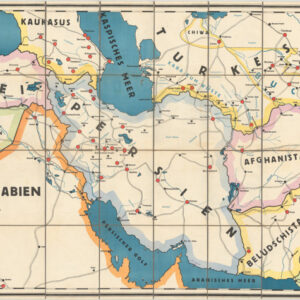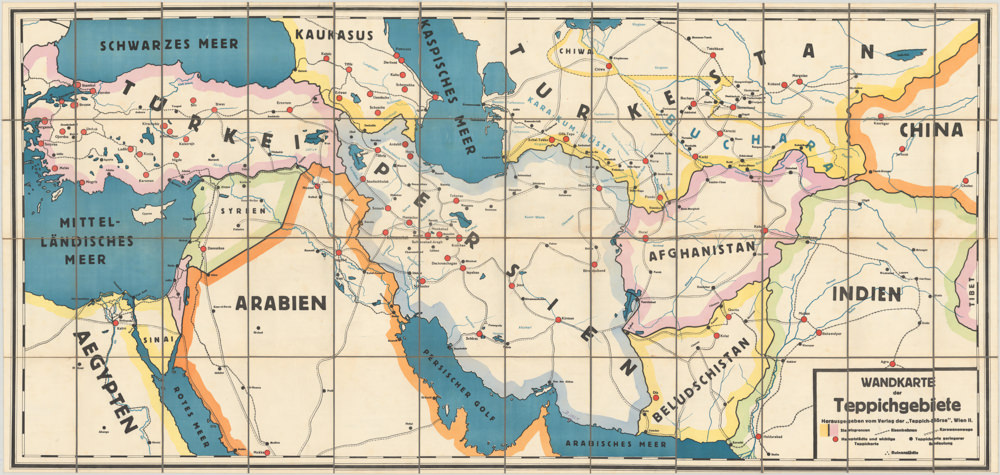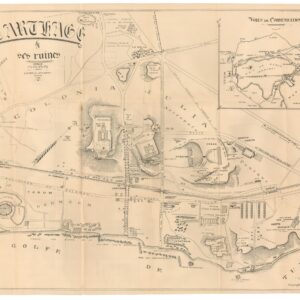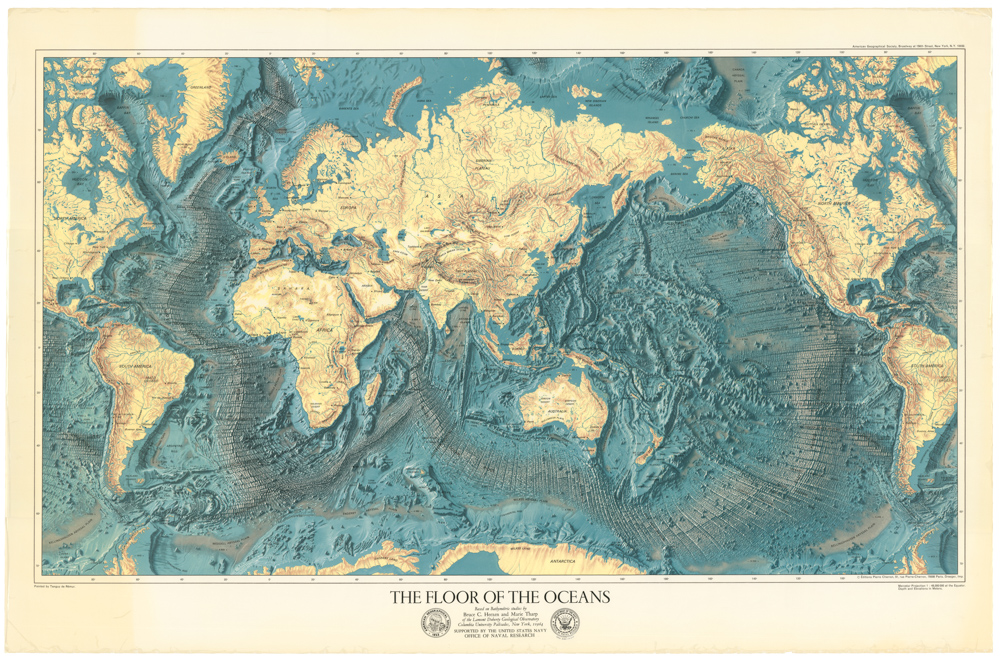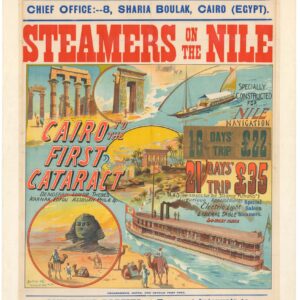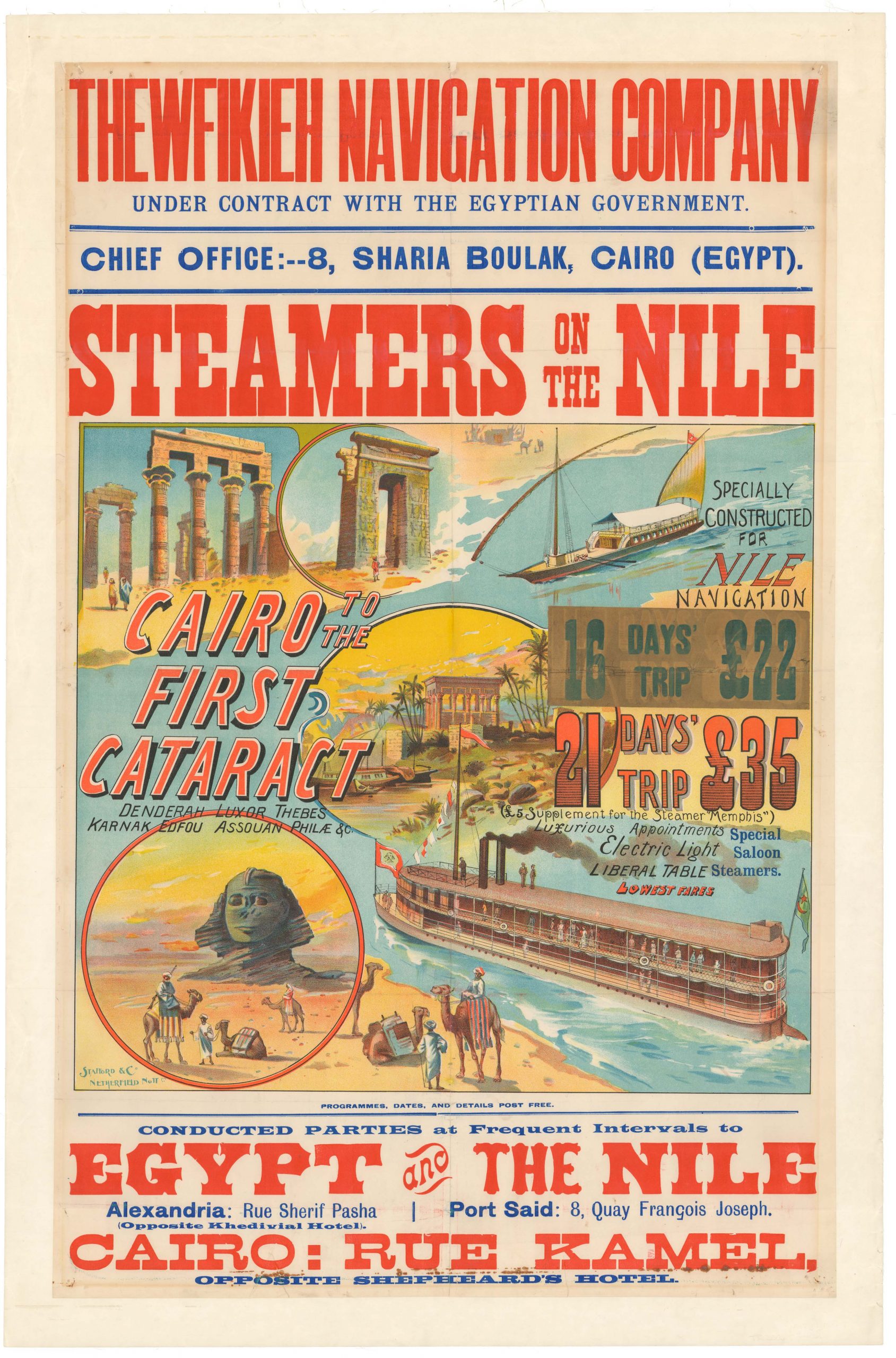Felix Jones’ third map in the Vestiges of Assyria series, in which the densely inhabited flood plain surrounding the capitals of Nineveh and Nimrud has been depicted.
Vestiges of Assyria. Sheet 3rd being a map of the country included in the angle formed by the River Tigris & The Upper Zab showing the disposition of the various ancient sites in the vicinity of Nineveh
Out of stock
Description
Showing some of the most important excavations in the history of archaeology.
This stunning map is the result of the first trigonometrical survey of the upper flood plains of the Tigris River, especially as related to the environs of the great Iraqi city of Mosul. Executed by British survey officers from the East India Company at the height of the Victorian Era and by the order of the British Government in India, the map depicts the area surrounding Assyria’s ancient royal capitals of Nineveh and Nimrud.
The map is the third in a series of three maps, with the two preceding maps being more focused on the areas surrounding Nineveh and Nimrod respectively. In this, the fascinating third chart, Jones takes a much broader perspective and maps out the entire region around the convergence of the Tigris and Upper Zab Rivers. It is the ultimate overview of the archaeological landscapes that had been brought to life by the the seminal excavations of Austen Henry Layard in the 1840s and the deciphering of Cuneiform writing at roughly the same time. These advances were world-news, as they provided entirely new insights into our civilizational past and thus excited both scholar and layman alike.
Scholar and Commander
The map is the third of three large sheets produced in 1852 by Commander James Felix Jones (1813-78). Jones was a veteran of Middle Eastern affairs. Along with Robert Moresby, he charted the northern part of the Red Sea between 1829 and 1834. A decade later, the British Army sent him to northern Iraq to help resolve a border dispute between Persia and the Ottoman Empire. Accompanying him on this journey was Sir Henry Rawlinson: also a British Army officer, but more importantly, a renowned Orientalist scholar who had made a decisive contribution to deciphering Semitic cuneiform languages like Akkadian, Babylonian, and Assyrian. In northern Iraq, Jones and Rawlinson experienced many of the ancient cultures and languages that Europeans only knew about from the Bible. Uncovering their secrets had become a key part of the Victorian thirst for aligning new knowledge with old beliefs.
Rawlinson inspired Jones with stories of the ancients. Jones found the archaeological landscapes so compelling that he returned in 1852 to map them formally, dedicating the outcome of those surveys (i.e. the first of the three maps) to Rawlinson. When Jones returned as the head of an East India survey team in 1852, the goal was to execute the first exact trigonometrical survey of a landscape deeply rooted in Biblical tradition. He focussed his effort on the royal cities of Nimrud and Nineveh, as well as the densely settled plain between the Tigris and Jebel Maglub.
Jones’s initial journey to this region is key to understanding the motivation behind these wonderful maps. Rawlinson’s decisive contribution to understanding ancient civilizations had been deciphering the Old Persian part of a trilingual cuneiform inscription carved on a rock face at Bīsitūn in Iran. The accomplishment was as seminal as the discovery of the Rosetta Stone and the deciphering of Egyptian hieroglyphs, partly because it spoke to a generation of soldier-scholars determined to demonstrate the Bible’s veracity through modern science.
The groundbreaking excavations of Austen Henry Layard
Complimenting Rawlinson’s translation work and Jones’s maps were Austen Henry Layard’s incredible archaeological discoveries at Nineveh in the 1840s. Layard initiated large-scale excavations of the two main mounds on the eastern bank of the Tigris, where he uncovered the magnificent palaces of Assyrian kings, including those of Biblical characters like Sennacherib, as well as the libraries and royal archives of this lost civilization. It was the discovery of the century, and Rawlinson’s work on the cuneiform language gave scholarship an entirely new kind of access to history. For many, this was more tangible than exploring the Exodus route taken by the Israelites in the Sinai.
Jones executed his surveys according to the British Army’s highest standards, which implied meticulousness and clarity. Layard’s excavations have been carefully marked in bright red, although the actual buildings he discovered are not directly represented. Also visible are numerous features, buildings, and villages surrounding Nineveh and Mosul. Some of these are as ancient as the Assyrian capital itself, while others are contemporary Ottoman sites. The second map depicts the area surrounding the other Assyrian royal capital, Nimrud, which was located some thirty kilometers downriver from Nineveh. A third map – also offered by Neatline – scales back the view to include the entire archaeological landscape surrounding both royal capitals.
Despite the broader perspective, the map includes both archaeological sites, the city of Mosul, and countless features, buildings, and villages scattered between them. Some places noted on the map are as ancient as the Assyrian capitals, while others are contemporary Ottoman sites. Jones annotates his work extensively. Most labels are in English, but the map also includes exotic-looking toponyms in Arabic and Cuneiform for dramatic effect. We see the city walls of both Nineveh and Nimrod clearly delineated in dark red and even have Layard’s excavations areas plotted in a brighter red color. Northeast of Nineveh, we even see the site of Khorsabad – the third Assyrian capital – which also had been excavated during the 1840s, only this was done by Layard’s French rival and counterpart, Paul-Emile Botta.
The broader view taken in Jones’s third map allows us to visualize the relationship between the ancient cities and their modern counterparts and to appreciate the landscape as a whole. The life-sustaining Tigris River runs through the composition like a civilizational spinal column. Within the walls of the ancient imperial cities, Layard discovered iconic buildings such as the palace and library of King Sennacherib. This archive contained more than 30,000 clay tablets, including some of history’s most essential ancient texts. Primary among them was the Epic of Gilgamesh, which, already in Assyrian times, constituted an ancient mythology that stretched back for millennia.
The Gilgamesh Epos is not only the earliest coherent mythology in humanity but includes stories mirrored in the Bible, such as the great flood. Excavating these sites and subsequently deciphering and translating the texts revolutionized how we understood the origins of Western Civilisation. Even today, Nineveh and Nimrud are ranked as some of the most important archaeological discoveries of all time. Most of the finds from Layard’s excavations are still held in the British Museum.
Like Jones’s other two Assyrian charts, the map was lithographed in color and issued in a dissected form laid on linen. All pertinent information is printed on the map itself, including a dedicatory note to the first patron of Assyrian research, Viscount Stratford de Redcliffe, who served as the British Ambassador to the Ottoman Empire at the time. In keeping with the general Orientalist style and atmosphere, the map is framed by a border of Assyrian-style motifs, including kings, gods, a Tree of Life, and the characteristic Winged Bulls that Layard had uncovered on the palace walls at Nineveh. It is a compilation that speaks both to academic curiosity and romantic historicism.
Conclusion
Ultimately, Jones’ maps were the product of an age in which Europeans expanded their sphere of political influence alongside their intellectual horizons. The Victorian Age produced a plethora of gentlemen- and lady scholars who traversed half the known world in an attempt to improve our species’ understanding of who we are and where we come from. The early archaeological exploration of the Middle East was a quintessential part of this drive, and nothing emboldened and stimulated it more than the discoveries in Northern Iraq. Jones’s maps are the cartographic manifestation of those discoveries, as well as of the fervent excitement that lay behind them.
Census
Felix Jones’s Vestiges of Assyria maps three maps are remarkably rare – both on the market and in institutional collections.
In American institutional collections we find holdings of all three maps at Harvard, University of Chicago, University of Wisconsin, and UCLA (OCLC nos. 31005511; 1252227018). A copy of all three maps is also held at the Metropolitan Museum of Art (OCLC no. 77739975).
Individual examples of the first sheet can be found at the Bibliothèque nationale de France (OCLC no. 495080532) and Leiden University Library (OCLC no. 71568777). Individual examples of the third sheet are held at Leiden University Library (OCLC no. 71568786), Universitätsbibliothek J.C. Senckenberg in Frankfurt (OCLC no. 174745220), and the Landesbibliothek des Sachsen-Anhalts (OCLC no. 1308805668).
Cartographer(s):
Felix Jones (1813-1874) was a British Commander in the Indian Navy and an employee of the East India Company. At only fourteen, he joined the Bombay Marine and soon became involved in British surveying projects in the Middle East. He served as a midshipman on the RIMS Palinurus, a 444-ton survey vessel launched in 1807 and belonging to the Royal Indian Marine. During its mission, the ship surveyed the large tracts of the Red Sea littoral.
In the 1820s, Jones moved on to serve on the first British survey of the Persian Gulf. This survey was necessary because the Gulf’s waters were treacherous and British ships were reluctant to sail to its head for commercial purposes. The survey began in 1820 near Oman and gradually worked its way north. It was completed under Stafford Bettesworth Haines in 1829, and Jones was an essential surveyor on the last leg of the mission. Haines has won some infamy as the EIC officer that secured Aden for the British.
After some years of service, Jones returned to the Middle East in 1839 to survey the harbor of Kuwait. Having built up considerable knowledge and experience in the Middle East at this stage, Jones continued to serve the Indian Navy as a surveyor in the Middle East, retiring in 1862 as Political Agent in the Persian Gulf. Historians have argued that Jones, in this capacity, played a central role in planning the British Invasion of Persia in 1856-57.
John WalkerJohn Walker was a British map seller, engraver, lithographer, hydrographer, geographer, draughtsman, and publisher of both nautical charts and geographical maps. Walker’s maps for publication were primarily produced in partnership with his brother, Charles, under the imprint J. and C. Walker. Among their joint projects were more than 200 maps for the influential Society for the Diffusion of Useful Knowledge Atlas (SDUK). In addition they published numerous charts for the Admiralty Hydrographic Office.
Condition Description
Excellent.
References
